Description
Omega Supreme – Ultra-Concentrated Triglyceride Fish Oil Optimization System
The Fish Oil Quality Crisis We Discovered Through Testing
When we started researching fish oil supplements for clinical recommendations, we encountered a disturbing reality that fundamentally changed our approach to omega-3 supplementation. We sent dozens of popular fish oil products to independent laboratories for analysis, expecting to confirm the EPA and DHA content listed on their labels. What we discovered was shocking: many products claiming “1000 mg of fish oil” actually contained less than 300 mg of EPA and DHA combined—the remaining 700 mg was essentially filler oils with minimal therapeutic value.
Even more concerning, several products tested positive for oxidation (rancidity), with peroxide values exceeding international quality standards. Rancid fish oil not only smells and tastes terrible (explaining the “fishy burps” so many people experience), but oxidized omega-3s can actually be pro-inflammatory rather than anti-inflammatory—delivering the opposite of their intended benefit. Some samples also contained measurable levels of environmental contaminants including heavy metals and PCBs, despite claims of “purity” on their labels.
This testing revealed three fundamental problems with the fish oil industry: (1) many products use low-concentration fish oil where only 30% of the oil is actually EPA and DHA, meaning you'd need to take massive doses to achieve therapeutic omega-3 levels; (2) inadequate purification allows environmental contaminants to remain in the final product; and (3) poor manufacturing and storage practices allow oxidation, creating rancid products that may cause more harm than good.
These findings led us to establish strict standards for any fish oil we would recommend: ultra-high concentration (providing at least 1 gram of EPA and DHA per softgel), rigorous third-party testing for over 450 potential contaminants, triglyceride molecular form (the natural form found in fish, with superior absorption compared to ethyl ester forms), and pharmaceutical-grade manufacturing with antioxidant protection to prevent rancidity.
Omega Supreme represents this uncompromising approach: an Ultra-Concentrated Triglyceride Fish Oil Optimization System providing 1,100 mg of total omega-3 fatty acids per softgel (730 mg EPA, 270 mg DHA) in natural triglyceride form, with EuroFins batch testing for over 450 contaminants and pharmaceutical-grade manufacturing ensuring purity, potency, and freshness.
Why Standard Fish Oil Supplements Disappoint
Most fish oil supplements on the market provide inadequate omega-3 levels, use inferior molecular forms, lack rigorous purity testing, or suffer from oxidation issues that compromise effectiveness and safety. This widespread mediocrity fails to address four critical realities of optimal omega-3 supplementation:
The Concentration Problem: Many fish oils contain only 30-35% EPA and DHA by weight, meaning a “1000 mg fish oil” softgel provides only 300-350 mg of actual therapeutic omega-3s. To achieve research-supported omega-3 levels (typically 1-3 grams EPA+DHA daily), you'd need to swallow 3-10 large softgels daily—an unrealistic burden that dramatically reduces compliance. Low-concentration products essentially dilute your omega-3 intake with non-therapeutic filler oils.
The Molecular Form Dilemma: Fish oil supplements exist in two primary molecular forms—natural triglycerides (the form omega-3s naturally occur in fish) and synthetic ethyl esters (created through chemical processing to concentrate EPA and DHA). While ethyl ester forms can achieve higher concentrations, research demonstrates they have significantly lower absorption than triglyceride forms—some studies showing 30-50% reduced bioavailability. Many manufacturers use ethyl ester forms because they're cheaper to produce, sacrificing absorption for cost savings.
The Purity and Contamination Risk: Fish accumulate environmental toxins including heavy metals (mercury, lead, cadmium), persistent organic pollutants (PCBs, dioxins), and other contaminants from polluted waters. Without rigorous purification and testing, these toxins concentrate in fish oil supplements. Many products claim “purity” but provide no transparency about testing methods, detection limits, or actual contamination levels. Independent testing frequently reveals products exceeding safety thresholds for contaminants.
The Oxidation and Rancidity Issue: Omega-3 fatty acids are highly susceptible to oxidation due to their multiple carbon-carbon double bonds. Exposure to oxygen, light, or heat during manufacturing, storage, or shelf life causes lipid peroxidation, creating rancid fish oil with foul odors and tastes. More importantly, oxidized omega-3s lose their anti-inflammatory benefits and may actually promote inflammation and oxidative stress. Products lacking adequate antioxidant protection and quality control often arrive oxidized, providing little benefit while potentially causing harm.
The Omega Supreme Ultra-Concentrated Triglyceride Strategy
Omega Supreme implements a comprehensive five-phase approach that addresses every critical factor determining fish oil quality, efficacy, and safety:
Phase 1: Ultra-High Concentration for Therapeutic Dosing – Provides 1,100 mg total omega-3 fatty acids per softgel (730 mg EPA + 270 mg DHA + 100 mg other omega-3s), representing approximately 73% omega-3 concentration—more than double the concentration of standard fish oils—allowing therapeutic omega-3 intake from just 1-3 softgels daily rather than requiring 5-10 lower-concentration capsules.
Phase 2: Natural Triglyceride Form for Superior Absorption – Delivers EPA and DHA in natural triglyceride molecular structure (the form found in fish), ensuring optimal absorption and bioavailability compared to synthetic ethyl ester forms that have 30-50% lower absorption efficiency, maximizing the omega-3s that actually reach target tissues.
Phase 3: Pharmaceutical-Grade Purification and Testing – Undergoes molecular distillation purification followed by comprehensive EuroFins third-party testing for over 450 potential contaminants including heavy metals, PCBs, dioxins, and other environmental toxins, ensuring purity levels exceeding international standards (GOED, CRN, WHO) and providing transparency about actual contamination levels rather than unverified purity claims.
Phase 4: Antioxidant Protection Against Rancidity – Includes proprietary antioxidant blend of natural tocopherols (vitamin E), rosemary extract, and ascorbyl palmitate protecting omega-3s from oxidation during manufacturing and throughout shelf life, plus natural lemon flavor masking any residual fish taste while maintaining freshness indicators (oxidized fish oil cannot hide behind lemon flavor).
Phase 5: Pharmaceutical-Grade cGMP Manufacturing – Produced in pharmaceutically-licensed, cGMP-certified facilities ensuring consistent quality, proper handling to prevent oxidation, accurate dosing, and rigorous quality control at every production stage—pharmaceutical standards far exceeding typical supplement manufacturing requirements.
The Science Behind High-Potency Omega-3 Supplementation
Understanding Omega-3 Fatty Acid Biochemistry
Omega-3 fatty acids represent a family of polyunsaturated fatty acids characterized by having their first carbon-carbon double bond at the third carbon from the methyl (omega) end of the fatty acid chain. While several omega-3 fatty acids exist, eicosapentaenoic acid (EPA) and docosahexaenoic acid (DHA) are the most physiologically significant for human health:
EPA (Eicosapentaenoic Acid): A 20-carbon omega-3 fatty acid with 5 double bonds (20:5n-3 in scientific notation). EPA serves as the precursor to series-3 prostaglandins, series-5 leukotrienes, and resolvins—lipid mediators that support healthy inflammatory responses and resolution pathways. EPA also incorporates into cell membrane phospholipids, influencing membrane fluidity, protein function, and cellular signaling.
DHA (Docosahexaenoic Acid): A 22-carbon omega-3 fatty acid with 6 double bonds (22:6n-3 in scientific notation). DHA is the predominant omega-3 in brain tissue, retina, and sperm, where it plays critical structural roles. DHA constitutes approximately 40% of polyunsaturated fatty acids in brain gray matter and 60% in retina, making it essential for neurological function, vision, and cognitive health. Like EPA, DHA also incorporates into cell membranes throughout the body and serves as precursor to specialized pro-resolving mediators (SPMs) including protectins and maresins.
Alpha-Linolenic Acid (ALA): An 18-carbon omega-3 (18:3n-3) found in plant sources like flaxseed, chia, and walnuts. While ALA is technically an essential fatty acid (the body cannot synthesize it), the conversion of ALA to EPA and especially DHA is extremely inefficient in humans (typically <5% converts to EPA, <0.5% to DHA). This means plant-based omega-3 sources cannot effectively replace marine omega-3s for providing adequate EPA and DHA.
The Essential Nature of EPA and DHA
Humans cannot synthesize omega-3 fatty acids de novo—we lack the desaturase enzymes required to insert double bonds at the omega-3 position. While the body can theoretically convert ALA to EPA and DHA, this conversion is so inefficient that dietary ALA cannot practically meet EPA and DHA requirements. This makes EPA and DHA conditionally essential nutrients—they must be obtained preformed from dietary sources, primarily fish and seafood.
Traditional populations consuming fish-rich diets (like indigenous Arctic peoples, Japanese coastal communities, Mediterranean populations) historically achieved EPA+DHA intakes of 1-4 grams daily, correlating with remarkably low rates of cardiovascular disease, cognitive decline, and inflammatory conditions. In contrast, typical Western diets provide less than 200 mg EPA+DHA daily—a 5-20 fold deficiency compared to evolutionary intake patterns.
This omega-3 deficiency has profound health implications because EPA and DHA serve critical functions throughout the body that cannot be adequately fulfilled by other fatty acids.
Cardiovascular Health: The Most Robust Evidence
Decades of research consistently demonstrate that EPA and DHA support multiple aspects of cardiovascular health through complementary mechanisms:
Triglyceride Reduction: EPA and DHA potently reduce serum triglycerides by inhibiting hepatic VLDL synthesis and enhancing triglyceride clearance. Clinical studies show 25-30% triglyceride reductions with 2-4 grams EPA+DHA daily, with effects dose-dependent. This triglyceride-lowering effect is so well-established that prescription omega-3 products (Lovaza, Vascepa) are FDA-approved for treating severe hypertriglyceridemia.
Healthy Blood Pressure Support: Meta-analyses of clinical trials show omega-3 supplementation modestly reduces both systolic and blood pressure, with effects most pronounced in individuals with elevated blood pressure. Mechanisms include enhanced nitric oxide production, improved endothelial function, and reduced vascular resistance.
Anti-Arrhythmic Effects: EPA and DHA stabilize cardiac cell membranes and modulate ion channel function, supporting healthy heart rhythm. Population studies show inverse associations between omega-3 intake and risk of arrhythmias.
Endothelial Function Support: EPA and DHA improve endothelial function (the health of blood vessel linings) through multiple mechanisms including enhanced nitric oxide bioavailability, reduced oxidative stress, and improved endothelial progenitor cell function. Healthy endothelial function is critical for vascular health and blood flow regulation.
Platelet Function Modulation: Omega-3s support healthy platelet aggregation responses, promoting balanced clotting function without excessive coagulation. This involves shifting from pro-aggregatory thromboxane A2 (derived from arachidonic acid) toward less aggregatory thromboxane A3 (derived from EPA).
Inflammatory Marker Modulation: EPA and DHA consistently reduce inflammatory biomarkers including C-reactive protein (CRP), interleukin-6 (IL-6), and tumor necrosis factor-alpha (TNF-α). Since chronic low-grade inflammation contributes to cardiovascular disease, this anti-inflammatory effect provides additional cardiovascular support.
Inflammatory Response Resolution: Beyond Anti-Inflammation
For years, omega-3s were understood primarily as “anti-inflammatory,” blocking production of inflammatory mediators derived from arachidonic acid (an omega-6 fatty acid). While this mechanism is important, recent research reveals EPA and DHA have an even more sophisticated role: they actively promote inflammation resolution through specialized pro-resolving mediators (SPMs).
Resolvins (derived from both EPA and DHA), protectins (from DHA), and maresins (from DHA) are lipid mediators that don't simply suppress inflammation but actively orchestrate its resolution—clearing inflammatory debris, promoting tissue repair, reducing neutrophil infiltration, and returning tissues to homeostasis. This distinction is critical: blocking inflammation can impair healing, while promoting resolution allows appropriate inflammatory responses followed by efficient resolution.
This resolution-promoting effect explains omega-3s' benefits for numerous inflammatory conditions including joint discomfort, exercise-induced muscle soreness, and various inflammatory markers throughout the body.
Musculoskeletal and Joint Support
As we age and remain physically active, joints experience mechanical stress and physiological changes that can compromise comfort and function. Research demonstrates EPA and DHA support joint health through multiple mechanisms:
Inflammatory Mediator Modulation: EPA and DHA reduce production of inflammatory prostaglandins and leukotrienes derived from arachidonic acid while promoting production of less inflammatory mediators derived from EPA. This shifts the balance toward reduced joint inflammation and improved comfort.
Cartilage Matrix Support: Omega-3s appear to influence cartilage metabolism, potentially supporting healthy cartilage matrix composition and reducing expression of matrix metalloproteinases (MMPs) that degrade cartilage.
Joint Discomfort Relief: Clinical trials in individuals with joint discomfort show EPA and DHA supplementation reduces joint stiffness, improves joint function scores, and may reduce need for conventional interventions. Effects typically emerge after 8-12 weeks of consistent use.
Exercise Recovery Support: EPA and DHA supplementation reduces exercise-induced muscle soreness and accelerates recovery, likely through their anti-inflammatory and pro-resolution effects. This supports consistent training and physical activity across the lifespan.
Cognitive Function and Brain Health
DHA is the predominant structural fatty acid in brain gray matter, comprising approximately 40% of total brain polyunsaturated fatty acids. This high concentration reflects DHA's critical roles in neurological function:
Neuronal Membrane Structure: DHA provides fluidity and flexibility to neuronal membranes, facilitating neurotransmitter release, receptor function, and signal transduction. The unique molecular structure of DHA (22 carbons, 6 double bonds) creates membrane properties that cannot be replicated by other fatty acids.
Synaptic Function Support: DHA concentrates in synapses (the connections between neurons), supporting synaptic plasticity—the ability of synapses to strengthen or weaken over time in response to activity. This plasticity underlies learning, memory formation, and cognitive adaptation.
Neuroprotection: Both EPA and DHA demonstrate neuroprotective effects through multiple mechanisms including reduced neuroinflammation, enhanced brain-derived neurotrophic factor (BDNF) expression, improved cerebral blood flow, and antioxidant effects.
Cognitive Performance: Clinical studies show omega-3 supplementation supports various aspects of cognitive function including memory, processing speed, attention, and executive function, with effects most pronounced in individuals with lower baseline omega-3 levels.
Mood and Mental Wellbeing: EPA appears particularly important for supporting healthy mood, with clinical trials showing benefits for emotional wellbeing. Mechanisms likely involve modulation of neurotransmitter systems and neuroinflammation.
Skin Health and Vitality
Skin represents the body's largest organ, constantly exposed to environmental stressors including UV radiation, pollutants, and oxidative challenges. EPA and DHA support skin health through multiple pathways:
Anti-Inflammatory Effects in Skin: EPA and DHA modulate inflammatory responses in skin tissue, potentially supporting healthy responses to UV exposure and environmental challenges.
Skin Barrier Function: Omega-3s incorporate into skin cell membranes and may support epidermal barrier function, helping maintain hydration and protecting against environmental insults.
Photoprotection Support: Research suggests omega-3s may provide some degree of photoprotection against UV-induced skin damage, though they do not replace sunscreen protection.
Skin Aging: The anti-inflammatory and antioxidant effects of EPA and DHA may support healthy skin aging by reducing oxidative stress and inflammatory factors that contribute to skin aging processes.
The Triglyceride Form Advantage
Omega-3 supplements exist in two primary molecular forms, with important differences in absorption and bioavailability:
Natural Triglyceride (TG) Form: This is how EPA and DHA naturally occur in fish—three fatty acids esterified to a glycerol backbone. Pancreatic lipase enzymes efficiently break down triglycerides in the small intestine, releasing fatty acids for absorption. The body is optimized to absorb omega-3s in this form because it's the form humans consumed throughout evolution.
Ethyl Ester (EE) Form: Created through chemical processing that removes the glycerol backbone and attaches fatty acids to ethanol, creating fatty acid ethyl esters. This process allows higher concentrations of EPA and DHA, but the ethyl ester form is synthetic—never found in nature or human diets until modern supplement manufacturing. Research consistently shows ethyl ester omega-3s have 30-50% lower bioavailability than triglyceride forms, particularly when taken without high-fat meals.
Re-esterified Triglyceride (rTG) Form: Some manufacturers convert ethyl esters back to triglyceride form through additional processing, creating “re-esterified triglycerides.” While absorption improves compared to ethyl esters, this form still doesn't perfectly match natural triglycerides and requires extra manufacturing steps.
Omega Supreme's Triglyceride Form: Uses natural triglyceride form, ensuring optimal absorption matching the form humans evolved consuming. While this means slightly larger softgels compared to ethyl ester products (since triglycerides are less concentrated than ethyl esters), the superior absorption means more EPA and DHA actually reaches tissues where they provide benefits.
The Ultra-Concentration Advantage: Evidence-Based Dosing Made Practical
Clinical research consistently shows omega-3 benefits are dose-dependent, with most therapeutic effects requiring 1-3 grams of EPA+DHA daily. However, standard fish oils providing only 300-350 mg EPA+DHA per softgel make achieving these research-supported doses impractically burdensome—requiring 3-10 large softgels daily.
Omega Supreme's 1,100 mg omega-3 concentration (730 mg EPA + 270 mg DHA + 100 mg other omega-3s per softgel) represents approximately 73% omega-3 content—more than double typical fish oil concentrations. This ultra-concentration means:
- For General Health Maintenance (1 gram EPA+DHA daily): Just 1 softgel daily provides research-supported levels
- For Cardiovascular Support (2-3 grams EPA+DHA daily): 2-3 softgels daily achieve therapeutic levels shown in clinical trials
- For Intensive Support (3-4 grams EPA+DHA daily): 3-4 softgels daily match doses used in clinical research for triglyceride reduction and intensive cardiovascular support
This concentration makes evidence-based omega-3 dosing practical and sustainable, dramatically improving compliance compared to requiring handfuls of lower-concentration capsules.
The EPA:DHA Ratio Strategy
Omega Supreme provides a 730:270 EPA:DHA ratio (approximately 2.7:1), reflecting strategic formulation decisions based on research:
EPA-Emphasis Benefits: Higher EPA content supports cardiovascular health (triglyceride reduction, blood pressure support), inflammatory response modulation, mood support, and general anti-inflammatory effects. Many cardiovascular and inflammatory condition studies used EPA-predominant formulations.
Adequate DHA for Neurological Support: The 270 mg DHA per softgel ensures meaningful DHA intake for brain health, cognitive function, and neurological support. Taking 2-3 softgels daily provides 540-810 mg DHA—substantial amounts for neurological health.
Balanced Approach: Rather than providing only EPA or only DHA, Omega Supreme's ratio recognizes that both fatty acids serve important, complementary roles. The EPA-emphasis reflects cardiovascular and inflammatory benefits while ensuring adequate DHA for neurological and structural functions.
Third-Party Purity Testing: EuroFins Verification
Omega Supreme undergoes comprehensive third-party testing by EuroFins—a global leader in analytical testing—for over 450 potential contaminants. This testing verifies:
Heavy Metals: Mercury, lead, cadmium, arsenic, and other toxic metals that accumulate in marine ecosystems and can concentrate in fish oils without proper purification.
Persistent Organic Pollutants: PCBs (polychlorinated biphenyls), dioxins, and furans—industrial chemicals that persist in the environment and accumulate in fatty tissues.
Pesticides and Herbicides: Agricultural chemicals that enter waterways and can accumulate in fish.
Other Contaminants: Various environmental toxins, industrial pollutants, and substances that could compromise product safety.
Exceeding International Standards: Testing confirms Omega Supreme meets or exceeds purity standards established by:
- GOED (Global Organization for EPA and DHA Omega-3s)
- CRN (Council for Responsible Nutrition)
- WHO (World Health Organization)
- European Pharmacopoeia
This transparency and rigorous verification provides confidence that Omega Supreme delivers pure omega-3s without harmful contaminants.
Antioxidant Protection: Preventing Rancidity
Omega-3 fatty acids' multiple double bonds make them highly susceptible to oxidation. Omega Supreme's proprietary antioxidant blend prevents rancidity through multiple complementary mechanisms:
Natural Mixed Tocopherols (Vitamin E): Fat-soluble antioxidants that intercept free radicals before they can oxidize omega-3 fatty acids, breaking the chain reaction of lipid peroxidation.
Rosemary Extract: Contains carnosic acid and rosmarinic acid—potent polyphenolic antioxidants with lipid-protective properties demonstrated to be more effective than synthetic antioxidants like BHT or BHA.
Ascorbyl Palmitate: A fat-soluble form of vitamin C that provides antioxidant protection in the lipid phase while regenerating tocopherols after they neutralize free radicals, extending antioxidant capacity.
Natural Lemon Flavor: Beyond masking any residual fish taste, lemon flavor serves as a freshness indicator—oxidized fish oil cannot hide behind flavoring, so pleasant lemon taste confirms freshness.
This multi-layered antioxidant protection ensures Omega Supreme maintains freshness from manufacturing through the entire shelf life, delivering omega-3s with full anti-inflammatory benefits rather than oxidized lipids that could promote inflammation.
Who Benefits Most from Omega Supreme
Individuals Seeking Cardiovascular Support: Those wanting to support healthy triglyceride levels, blood pressure, endothelial function, or overall cardiovascular wellness benefit from Omega Supreme's high EPA content and evidence-based dosing.
People with Joint Discomfort or Musculoskeletal Concerns: Individuals experiencing age-related joint changes, exercise-related discomfort, or seeking to support joint comfort and function can benefit from omega-3s' anti-inflammatory and pro-resolution effects.
Anyone Concerned About Cognitive Health: People seeking to support memory, cognitive function, mood, or long-term brain health benefit from Omega Supreme's substantial DHA content combined with EPA's anti-inflammatory effects.
Athletes and Active Individuals: Those engaged in regular intense exercise can use Omega Supreme to support recovery, reduce exercise-induced inflammation and muscle soreness, and optimize training adaptations.
Individuals with Limited Fish Consumption: People who don't regularly consume fatty fish (salmon, sardines, mackerel, anchovies) 2-3 times weekly need supplementation to achieve adequate EPA and DHA intake.
Those Wanting Pharmaceutical-Grade Purity: Individuals concerned about mercury, PCBs, and other contaminants in fish can confidently use Omega Supreme knowing it undergoes rigorous third-party testing for over 450 contaminants.
People Taking Multiple Softgels Daily of Other Fish Oils: If you're currently taking 3-6 capsules of standard fish oil to achieve adequate omega-3 intake, Omega Supreme's ultra-concentration allows you to reduce to 1-2 softgels while maintaining or increasing actual EPA and DHA intake.
The Complete Omega-3 Optimization Protocol
Daily Use Guidelines
Standard Protocol: Take 1 softgel daily for general health maintenance (providing 1,100 mg total omega-3s, 1,000 mg EPA+DHA), or up to 3 softgels daily for enhanced support (providing 3,300 mg total omega-3s, 3,000 mg EPA+DHA), with food.
Taking with Food: Omega-3 absorption is enhanced when taken with meals containing dietary fat. The fat in your meal stimulates bile release and lipase enzyme secretion, optimizing omega-3 digestion and absorption. Taking Omega Supreme with breakfast, lunch, or dinner ensures optimal bioavailability.
Dosing Strategies Based on Goals:
General Health and Prevention (1 gram EPA+DHA daily): 1 softgel daily provides research-supported omega-3 levels for general health maintenance, cardiovascular support, and anti-inflammatory benefits.
Cardiovascular and Joint Support (2 grams EPA+DHA daily): 2 softgels daily provide levels shown in clinical trials to support healthy triglycerides, blood pressure, inflammatory markers, and joint comfort.
Intensive Support (3 grams EPA+DHA daily): 3 softgels daily match dosing used in cardiovascular research and provide robust anti-inflammatory and pro-resolution support. This level is appropriate for individuals with elevated triglycerides, significant joint concerns, or intensive cardiovascular support needs.
Consistency is Critical: Omega-3s work through long-term incorporation into cell membranes and sustained modulation of inflammatory pathways, not acute effects. Consistent daily use for at least 8-12 weeks is necessary to experience full benefits as tissue omega-3 levels optimize.
Timing and Distribution
Single Daily Dose vs. Divided Dosing: For 1-2 softgels daily, taking them together with one meal is convenient and effective. For 3 softgels daily, some people prefer splitting the dose (1-2 softgels with two different meals) to distribute omega-3 intake and potentially enhance absorption, though either approach works well.
Morning vs. Evening: Either timing works effectively—choose whichever meal provides the most dietary fat and is most convenient for consistent daily use. Some people prefer morning dosing as part of their daily supplement routine, while others prefer evening with dinner.
Duration and Expectations
Initial Response Period: Some individuals notice benefits within 2-4 weeks (such as improved recovery from exercise or subtle joint comfort improvements), but more comprehensive effects typically emerge over 8-12 weeks as tissue omega-3 levels optimize and cell membranes incorporate EPA and DHA.
Cardiovascular Effects Timeline: Triglyceride reductions become measurable within 4-6 weeks, with maximal effects by 12 weeks. Blood pressure effects similarly develop over 4-12 weeks of consistent use.
Joint Comfort Timeline: Research shows joint comfort benefits typically require 8-12 weeks of consistent omega-3 supplementation, with continued improvements over 3-6 months.
Long-Term Use: Omega Supreme is designed for indefinite long-term use. Omega-3s are essential nutrients required for optimal health throughout life. Consistent supplementation maintains tissue omega-3 levels and provides ongoing benefits.
Complementary Nutritional Strategies
Reduce Omega-6 Excess: The Western diet provides excessive omega-6 fatty acids (primarily from vegetable oils like corn, soybean, safflower oils) creating unfavorable omega-6 to omega-3 ratios. Reducing omega-6 intake while increasing omega-3s optimizes the balance, enhancing anti-inflammatory benefits.
Antioxidant Support: The polyunsaturated nature of omega-3s means they're vulnerable to oxidation in the body. Adequate antioxidant status (from vitamin E, vitamin C, selenium, polyphenols) protects omega-3s after absorption, maintaining their anti-inflammatory benefits.
Dietary Omega-3 Sources: While Omega Supreme provides concentrated EPA and DHA, consuming fatty fish (wild salmon, sardines, mackerel, anchovies) 2-3 times weekly provides additional omega-3s plus other nutrients (selenium, vitamin D, protein) that support overall health.
Minimize Trans Fats and Oxidized Oils: Trans fats and heavily processed oxidized vegetable oils compete with omega-3s for incorporation into cell membranes and promote inflammation. Minimizing these harmful fats while increasing omega-3s maximizes anti-inflammatory effects.
Why Omega Supreme Represents a Superior Approach
Ultra-High Concentration (73% Omega-3s): Provides 1,100 mg total omega-3s per softgel (730 mg EPA + 270 mg DHA)—more than double the concentration of standard fish oils—making evidence-based dosing practical with just 1-3 softgels daily rather than requiring 5-10 lower-concentration capsules.
Natural Triglyceride Form: Delivers EPA and DHA in the same molecular form found in fish, ensuring optimal absorption (30-50% better than synthetic ethyl ester forms) and matching the form humans evolved consuming.
Pharmaceutical-Grade Purity with Third-Party Verification: EuroFins testing for over 450 contaminants confirms Omega Supreme exceeds international purity standards (GOED, CRN, WHO), providing transparent verification of safety rather than unverified purity claims.
Comprehensive Antioxidant Protection: Proprietary blend of natural tocopherols, rosemary extract, and ascorbyl palmitate prevents oxidation, ensuring fresh omega-3s with full anti-inflammatory benefits rather than rancid lipids that could be pro-inflammatory.
Strategic EPA:DHA Ratio: The 2.7:1 EPA:DHA ratio provides EPA-emphasis for cardiovascular and inflammatory support while ensuring meaningful DHA for neurological health—balanced formulation addressing multiple health needs.
Pharmaceutical-Licensed cGMP Manufacturing: Produced in facilities meeting pharmaceutical standards far exceeding typical supplement requirements, ensuring consistent quality, accurate dosing, and rigorous quality control.
Clean Formulation: Contains only fish oil, gelatin softgel (with glycerin and water), natural lemon flavor, and antioxidant blend—no unnecessary additives, fillers, or synthetic ingredients.
Frequently Asked Questions (continued)
Q: Why does Omega Supreme have lemon flavor?
Natural lemon flavor serves two purposes: (1) masking any residual fish taste, making the softgels pleasant to take, and (2) serving as a freshness indicator—oxidized (rancid) fish oil cannot hide behind flavoring, so pleasant lemon taste confirms freshness. This combines with the antioxidant blend (tocopherols, rosemary extract, ascorbyl palmitate) ensuring omega-3s remain fresh and effective throughout the product's shelf life.
Q: Should I take Omega Supreme with food or on an empty stomach?
Always take Omega Supreme with meals containing dietary fat. Fat in your meal stimulates bile release and lipase enzyme secretion, significantly enhancing omega-3 absorption. Taking with breakfast, lunch, or dinner ensures optimal bioavailability. Taking on an empty stomach reduces absorption efficiency.
Q: Can I get enough omega-3s from eating fish instead of taking supplements?
Consuming fatty fish (wild salmon, sardines, mackerel, anchovies) 2-3 times weekly can provide adequate EPA and DHA for many people. However, several factors make supplementation practical or necessary: (1) many people don't consistently eat fish multiple times weekly, (2) concerns about mercury and other contaminants in fish, (3) taste preferences or dietary restrictions limiting fish consumption, (4) higher omega-3 needs (cardiovascular support, joint concerns) requiring amounts difficult to achieve through diet alone. Omega Supreme provides concentrated, purified EPA and DHA without contaminant concerns.
Q: Is Omega Supreme safe for long-term daily use?
Yes. EPA and DHA are essential nutrients required throughout life for optimal health. Omega Supreme is specifically formulated for indefinite daily use, providing concentrated omega-3s in their natural form with pharmaceutical-grade purity. Decades of research support the long-term safety of omega-3 supplementation at these levels.
Supplement Facts
Serving Size: 1 Soft Gelatin Capsule
Servings Per Container: 120
| Nutrient | Amount Per Serving | % Daily Value |
|---|---|---|
| Calories | 15 | |
| Total Fat | 1.5 g | 2%* |
| Cholesterol | 5 mg | 2% |
| Total Omega-3 Fatty Acids | 1,100 mg | ✝ |
| EPA (Eicosapentaenoic acid) | 730 mg | ✝ |
| DHA (Docosahexaenoic acid) | 270 mg | ✝ |
| Additional Omega-3 Fatty Acids | 100 mg | ✝ |
*Percent Daily Values are based on a 2,000 calorie diet
✝ Daily Value not established
Other Ingredients: Highly concentrated omega-3 fish oil (anchovy, sardine, mackerel), capsule shell (gelatin, glycerin, purified water), natural lemon flavor, proprietary antioxidant blend (consisting of natural tocopherols, rosemary extract, and ascorbyl palmitate).
Quality Assurance & Purity
Omega Supreme is produced in pharmaceutically-licensed, cGMP-certified facilities with rigorous quality control. Each batch undergoes comprehensive third-party EuroFins testing for over 450 potential contaminants including:
- Heavy metals (mercury, lead, cadmium, arsenic)
- PCBs (polychlorinated biphenyls)
- Dioxins and furans
- Pesticides and herbicides
- Environmental toxins and pollutants
Purity Standards: Meets or exceeds international standards from:
- GOED (Global Organization for EPA and DHA Omega-3s)
- CRN (Council for Responsible Nutrition)
- WHO (World Health Organization)
- European Pharmacopoeia
Molecular Form: Natural triglyceride form for optimal absorption and bioavailability
Freshness Protection: Proprietary antioxidant blend prevents oxidation and rancidity
Dietary Considerations:
✓ Dairy/Milk-Free
✓ Gluten-Free
✓ Yeast-Free
✓ Starch-Free
✓ Corn-Free
✓ Egg-Free
✓ Non-GMO
Contains: Fish oil from anchovy, sardine, and mackerel
Important Safety Information
Recommended Use: Take 1 softgel up to 3 times daily with food, or as directed by your healthcare practitioner.
Warnings:
⚠ Consult your healthcare practitioner if pregnant, nursing, or taking nutritional supplements or medications
⚠ Individuals taking anticoagulant or antiplatelet medications should discuss potential interactions with their healthcare practitioner
⚠ Keep out of reach of children
⚠ Do not use if tamper seal is damaged
Storage: Store in a cool, dry place. Color, size, or shape may vary between lots.
Allergy Information: This product contains fish oil from anchovy, sardine, and mackerel.
These statements have not been evaluated by the Food and Drug Administration. This product is not intended to diagnose, treat, cure, or prevent any disease.
For optimal results, combine Omega Supreme with a balanced diet emphasizing whole foods, regular physical activity, adequate hydration, stress management, and sufficient sleep. Reduce excessive omega-6 intake from processed vegetable oils while increasing omega-3-rich foods (fatty fish, flaxseed, walnuts) to optimize omega-6 to omega-3 ratios and support comprehensive anti-inflammatory benefits.
=========================
IN CASE YOU MISSED IT:
How Mold and Mycotoxins Affect Your Child's Brain Development
Psoriasis and Eczema FIXED by Removing This Hidden Trigger | Podcast #463

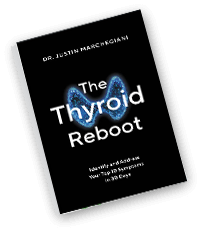
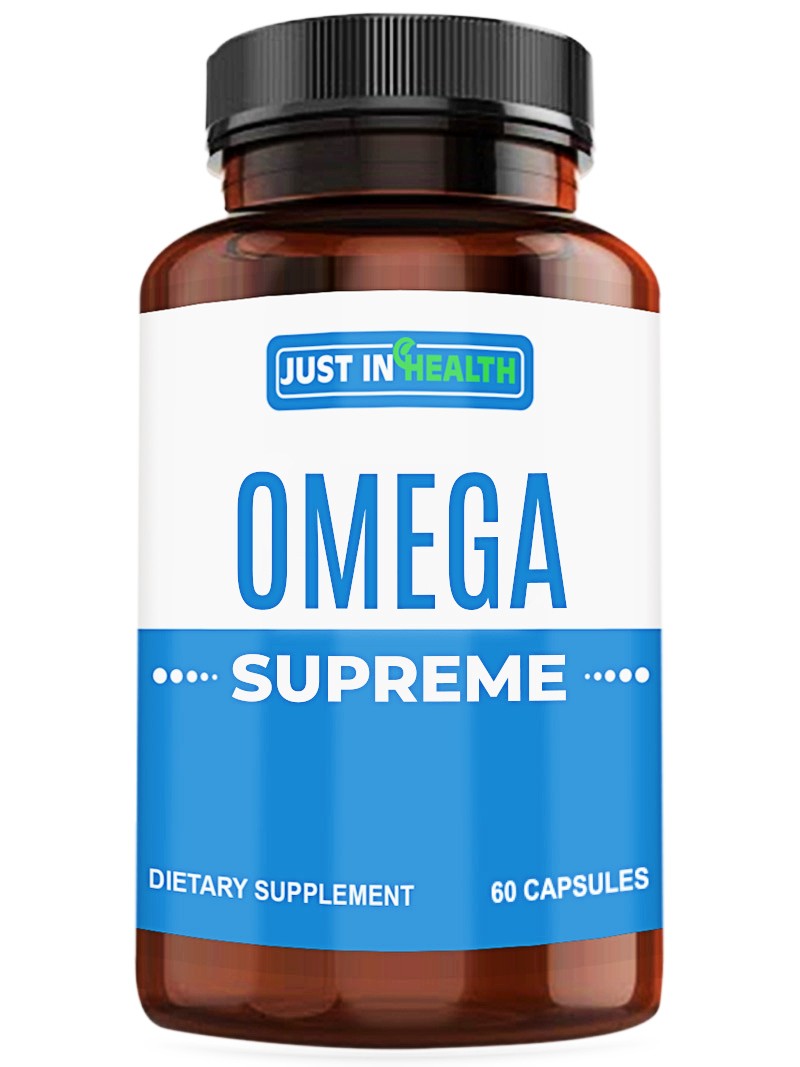
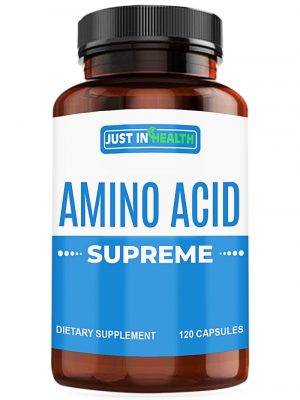
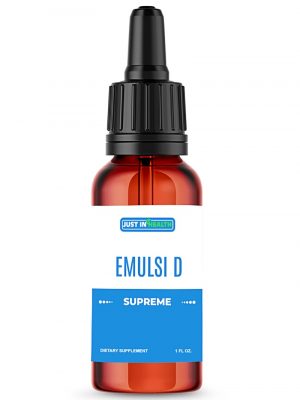
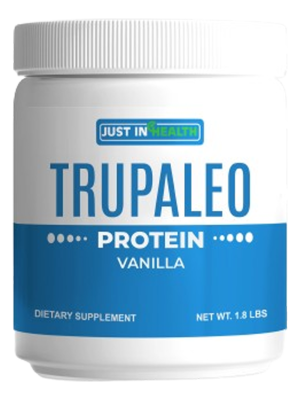
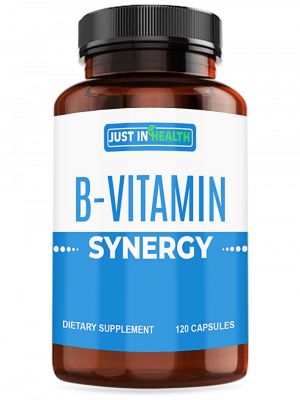
Reviews
There are no reviews yet.